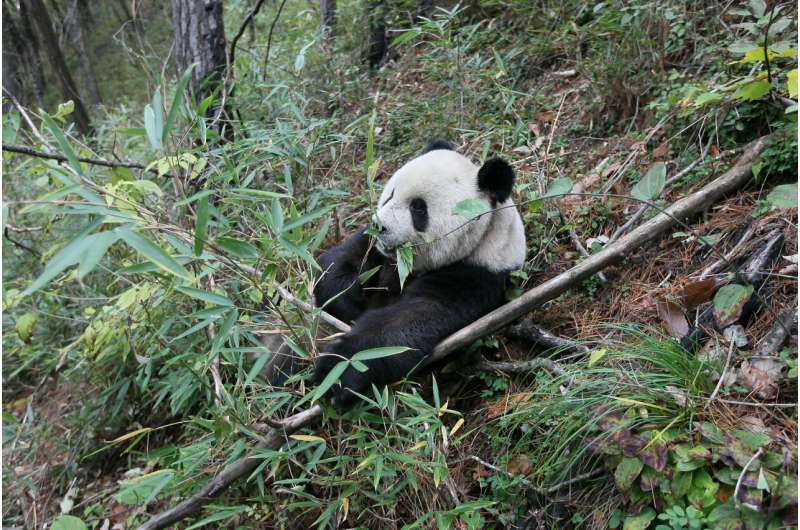Ancient pandas weren't exclusive bamboo eaters, bone evidence suggests

The giant pandas we know and love today live only in the understory of particular mountains in southwestern China, where they subsist on bamboo alone. In support of their tough and fibrous bamboo diet, they've got distinctive teeth, skull, and muscle characteristics along with a special pseudo-thumb, the better to grasp and hold bamboo stems, leaves, and shoots with. But according to new evidence reported in Current Biology on January 31, extinct and ancient panda species most likely had a more varied and complex diet.
"It has been widely accepted that giant pandas have exclusively fed on bamboo for the last two million years," says Fuwen Wei of Chinese Academy of Sciences. But, "our results showed the opposite."
It's impossible to know exactly what extinct animals ate. But researchers can get clues by analyzing the composition of stable isotopes (different forms of the same element that contain equal numbers of protons but different numbers of neutrons) in animal teeth, hair, and bones, including fossil remains. In the new study, the researchers first analyzed bone collagen of modern pandas (1970s-2000s) and other mammals from the same mountains.
The stable isotopic composition of carbon and nitrogen from modern panda and other modern mammal bone samples indicated three obvious groups: carnivores, herbivores, and giant pandas. The giant pandas were clearly unique, on account of their habit of eating bamboo. Next, Wei's team measured bone collagen isotopes of 12 ancient pandas collected from seven archaeological sites in southern and southwestern China and compared them to the patterns they observed in modern giant pandas.
The data comparison showed that ancient and modern pandas are isotopically distinct from one another, suggesting differences in their dietary habits. There was also more variation among ancient panda species, suggesting that the niche they occupied was about three times wider than that of modern pandas. That is, ancient pandas most likely had a varied diet, similar to that of other mammalian species that lived alongside them. They were, the researchers write, "probably not exclusive bamboo feeders."
The researchers suggest that pandas' dietary habits have evolved in two phases. First, the pandas went from being meat eaters or omnivores to becoming dedicated plant eaters. Only later did they specialize on bamboo.
The researchers say they would now like to figure out when exactly pandas shifted to the specialized diet they have today. To find out, they plan to collect and study more panda samples from different historical times over the last 5,000 years.
More information: Current Biology, Han et al.: "Diet Evolution and Habitat Contraction of Giant Pandas via Stable Isotope Analysis" www.cell.com/current-biology/f … 0960-9822(19)30004-1 , DOI: 10.1016/j.cub.2018.12.051
Journal information: Current Biology
Provided by Cell Press





















